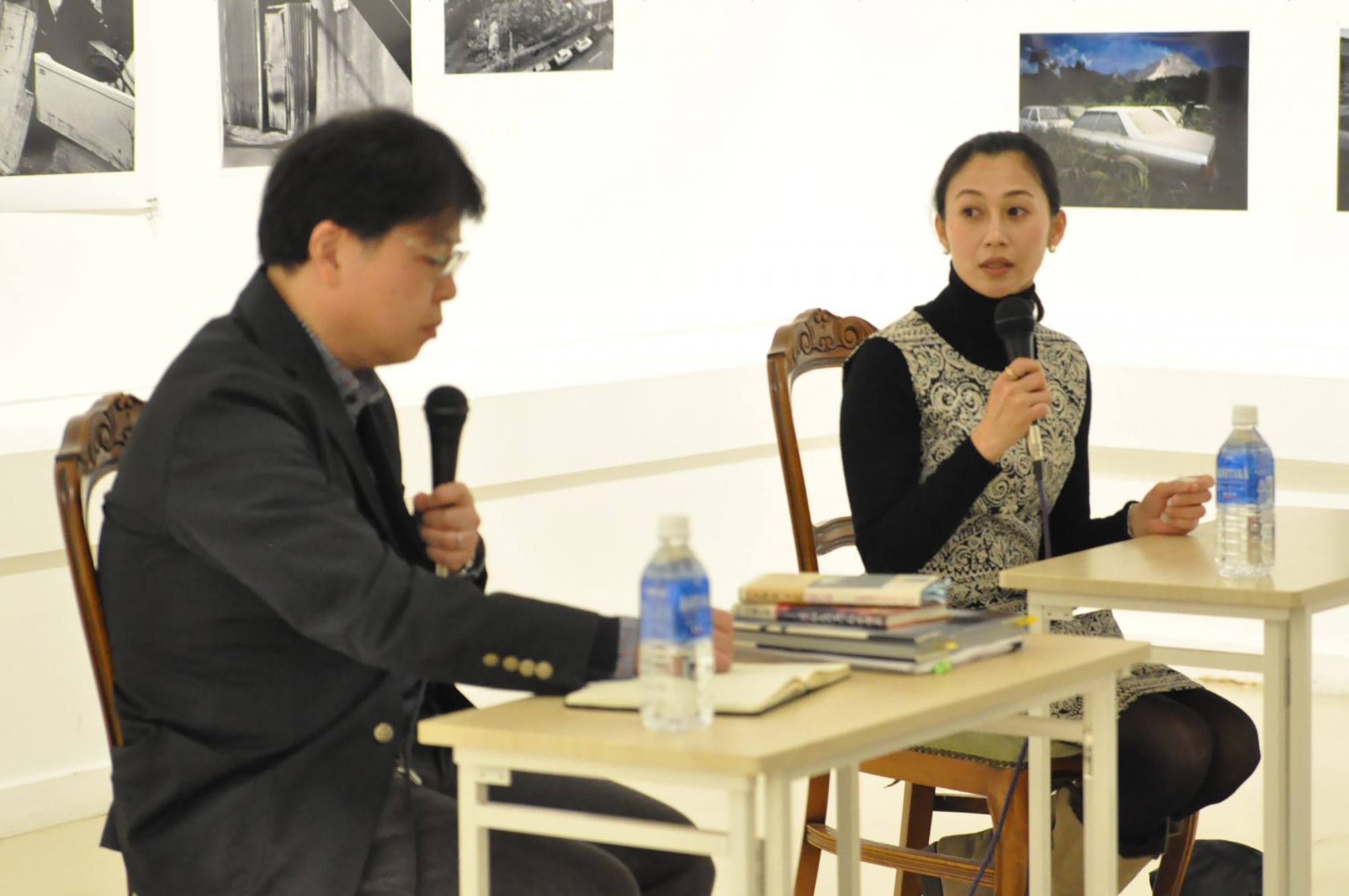Reopening of “Katsumi Sunamori: Implications of the Scenery”
Maruki Gallery for the Hiroshima Panels has reopened from the 9th of June and the exhibition Katsumi Sunamori: Implications of the Scenery has been extended till the 30th of August. On the occasion of reopening, we are pleased to share an essay written by Kazura Sunamori, the daughter of Katsumi Sunamori (From Maruki Gallery News No. 141 published in April 2020).

Be alert and always keep on praying for all people
It has been 11 years since my father Katsumi Sunamori passed on. A letter written like a will stated that “I don’t mind if Kazura manages and publishes my photographs. However, if there are plans to let someone else handle them, do not meddle with it.”
I had no idea what I should do. I thus discovered curatorial courses in distance-learning universities and enrolled myself at Musashino Art University. It took me a long time to read the references and I was struggling with writing reports as I had not studied seriously before.
Although my father had terminal cancer, he never showed any form of weakness while undergoing anti-cancer therapy. He looked as if he was well and not evidently in pain. Moreover, he used to tell us jokes when my mother and I visited him in the hospital. He became more emaciated day after day. His legs swelled due to the blockage in his lymphatic vessels and there were signs of jaundice in his eyes whenever I looked at him in the face. However, his energetic behavior did not let us know that his time was drawing near. He did gait rehabilitation every day while limping on his elephant-like legs. He smiled and said, “If I am unable to walk like before, I would go on photoshoots using a monopod instead of a stick!”
He often wore an oxygen mask and took morphine for roughly 2 weeks before his passing. He never reclined his bed even when he was asleep. Looking back, he might have thought that he would die shortly if he took morphine to ease the pain and lay in the bed comfortably. Sitting on the bed all day and being tensed up was his way of resisting death.
Only once when he was in the hospital that he cried and said, “There is still something I have to photograph.”
If my father was still alive, I would continue to take photographs. However, I could not take photographs anymore since then. I felt that my ambition was insignificant compared to my father’s, as he never gave up till the last moment. Seeing that, I decided to dedicate my whole life to my father’s photographs, making them widely known to the public.
I have been motivated by my father’s way of life in the past 11 years. He never lost hope no matter how much he struggled, went through pain, and had his freedom restricted. I was determined to study to make my father’s photographs publicly known, despite the possibility that they might lack recognition.
While studying the curatorial course, I started to understand that learning how to plan an exhibition was not enough. However, I came to acknowledge that organizing exhibitions of my father’s works could be seen as my mode of expression. This led me to pursue a postgraduate degree at Kyoto University of Art and Design in Art and Design Studies, specializing in the Art and Environment Studies field.
Although the readings I had in graduate school became increasingly difficult, the knowledge I have acquired allowed me to think more broadly and freely. Thus, I was able to see my father’s works from new perspectives. Though I could sense an intangible quality underlying in his various photographs, I am unable to make sense of what it is. There is certainly something that exists within his body of works, which is not limited to a categorization of photography, namely journalism.
The theme of my master’s dissertation was based on one of his series Mokushi no machi, which was about the disaster-stricken area of an eruption in Fugen peak at Mount Unzen, Nagasaki. My research was an attempt to find out what exactly was that intangible quality in my father’s photographs. Though I was unable to find an answer through my research, this dissertation has open doors for further collaborative research of my father’s practice, which had been impossible for me to do it alone.
I had struggled at that period, but I was not lonely as many individuals advised and helped me along the way. These people truly spared time for me and supported me throughout the entire process. It was an invaluable experience that I have shared with them.
This exhibition Katsumi Sunamori: Implications of the Scenery would not come to fruition without art critic, Noi Sawaragi. The separation and suffering in wars, poverty, and natural disasters allow us to know about the past and reflect on how to live our lives. Realizing this exhibition during an unprecedented time might be exceptionally significant, as it does not only highlight my father’s practice but also raises questions and concerns we face today.
The past 11 years was a time of mourning for my father and laying his soul to rest. From now, I will be alert and always keep on praying for all people.
With my sincere gratitude for all who was involved in this exhibition,
Kazura Sunamori, Katsumi Sunamori Photography Office
